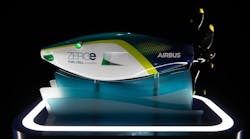Officials of the Naval Sea Systems Command in Washington are asking Lockheed Martin to provide the Navy’s fiscal 2015 AN/SQQ-89A(V)15 surface ship undersea warfare shipboard electronics system and shore site development systems. The contract is for the technical insertion 14 baseline of the AN/SQQ-89A(V)15 systems.
The AN/SQQ-89A(V)15 is a surface ship undersea combat system designed to search, detect, classify, localize, and track submarines, mine-like small objects, and torpedoes. The system also helps the ship's crew decide whether to attack or run from submerged threats, Navy officials say.
The contract combines purchases for the U.S. Navy, as well as the government of Japan under the Foreign Military Sales program. The contract was awarded on 30 Sept. -- the last day of federal fiscal year 2015.
The AN/SQQ-89A(V)15 uses active and passive sonar to enable Navy Arleigh Burke-class destroyers and Ticonderoga-class cruisers to detect and track undersea threats. The system provides multi-sensor track correlation and target track management control, and forwards data to the ship’s weapons and decision-support systems.
Related: Sonar technology comes to grips with dangerous new era
The AN/SQQ-89A(V)15 works together with the ship's active and passive hull sonar, multi-function towed array, sonobuoy processing, torpedo alerts, fire-control system, sensor performance predictions, embedded operator, and team training systems.
The AN/SQQ-89A(V)15 has an open electronics architecture to accommodate system upgrades, and makes the most of data accessibility and system modules, Lockheed Martin officials say. Its software application programs are isolated from hardware with open middleware to render applications processor-independent.
The system uses POSIX-compliant system calls and Motif and X-compliant display service calls. Symmetric multi-processors (SMPs) using Linux-based processing handle signal, data, display, and interface processing.
Virtual Network Computing (VNC) enables rapid re-allocation of operator console displays to suit the tactical situation, Lockheed Martin officials say.
Recent and planned upgrades to the AN/SQQ-89A(V)15 include improved automated torpedo detection, sonar performance prediction, advanced active sonar processing, re-designed active displays to reduce operator loading, and integrated training and logistics.
The AN/SQQ-89 is integrated with the Aegis combat system and vertical launch anti-submarine rocket (ASROC) system. A variant of the AN/SQQ-89A(V)15 is integrated with late-version Aegis combat systems being installed onboard new Arleigh Burke-class destroyers. A back-fit program is in place to retrofit existing DDG-51 class ships and Ticonderoga-class cruisers.
On this contract modification Lockheed Martin will do the work in Lemont Furnace, Pa.; Syracuse, N.Y.; Clearwater, Fla.; and Owego, N.Y., and should be finished by February 2018.
For more information contact Lockheed Martin MS2 online at www.lockheedmartin.com/us/mst, or Naval Sea Systems Command at www.navsea.navy.mil.



